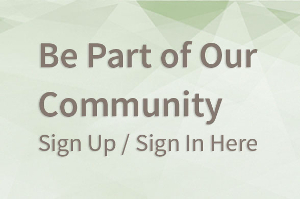BK Blog Post
Old Media and New Media Have More in Common Than You Think
 Posted by
Charlotte Ashlock,
Executive Editor,
Berrett-Koehler Publishers Inc.
Posted by
Charlotte Ashlock,
Executive Editor,
Berrett-Koehler Publishers Inc.
Charlotte Ashlock is a crazy idealist trying to make the world a better place!
When it comes to teaching myself web design and online marketing, I’ve tried everything: e-newsletters, podcasts, webinars, online video courses, free ebooks: I gobble those things up like a kid in a candy store. So what has actually made me a better web designer?
I got my best web design advice from people who never designed a website in their lives. The editors at Berrett-Koehler are the source of my most powerful design thinking. These gentlemen are much older than me, and I won’t lie: some of them get teased for being technophobes! So why is their wisdom so valuable? One simple reason.
What makes a piece of media compelling is the same, regardless of whether that piece of media is a book or a website. Here comes my list of five must-haves that stay the same, regardless of whether you are creating a book or website.
- You need one central Big Idea. The number one mistake authors make when planning books? They try to share everything they know at once. But readers don’t want an infodump; they want a specific solution to a specific problem. So, our editors drill down with authors to find the one killer idea that will win everyone over. Websites have the same need for focus. If you give me ten things to click on, I won’t know what to do next and I’ll just bounce away from the site. If you give me one insanely good thing to click on, chances are I’ll take the bait! A good web designer should coach clients to decide on their number-one-priority. Helping people choose between priorities is never easy; but there’s no better way to learn it than watching a master book editor in action.
- You must have a Call to Action. Our company has a social mission of “connecting people and ideas to create a world that works for all.” Because we want to change the world, not just publish books, we make it mandatory for our authors to ask readers to do something different in their lives. If a book doesn’t have a strong call to action, we ask the author to revise the manuscript. Also, we were calling it a “call to action,” long before web designers started glibly blogging about CTAs. Compelling media products beget action; whether that action is entering your email address to receive a free newsletter, or whether that action is committing to more peaceful methods of communicating with your coworkers (see our book, Leadership and Self-Deception, for more about that!)
- The structure supporting your big idea must be clear, simple, and logical. No one would deny that information architecture and user experience design are challenging technical disciplines. What’s amazing is how much they really have in common with designing a table of contents. Your table of contents is your book’s main navigation menu. Each chapter title must be incredibly compelling in its own right (to encourage readers to flip to it or click on it) and yet support your Big Idea in the form the a logical argument or continuous narrative. Sometimes the editors spend more time helping an author with a Table of Contents than they do with the manuscript itself. You gotta get that navigation right — because your user/reader is in a hurry! They don’t want to waste time looking — they want to take the straightest possible path, directly to the knowledge they need.
- It must be optimized for social shares. Here’s the real shocker when it comes to how much old and new media have in common. Long before social media was invented, our editor/CEO Steve was writing that the way to overcome the awful truths of the publishing world was to realize “the game is now pass-along sales.” By this, Steve meant that he was coaching authors to write the kind of books that people want to share with others. People are more likely to buy books for their employees or friends than for themselves. Therefore, creating shareable books has always been essential to commercial success in publishing. The way Steve manipulates book titles to make them maximally shareable, is exactly the kind of strategic thinking I must use when I am writing share-worthy headlines to pump into Facebook and Twitter.
- Showcase mind-blowing stories. If your website doesn’t tell a good story, people are going to bounce off the page. Logically enough, book editors are experts when it comes to story-telling!
It always make sad when people say, “I don’t know anything about technology,” or “I just don’t get along with computers.” Sure, learning new interfaces can be annoying, but in my opinion, the difference between the digital and the non-digital world is trivial. Many older people have amazing talents and skills that would help them shine like a blazing star in the online world. The problem is, they’re too afraid to use them. They don’t realize how much of their hard-won expertise actually transfers directly into the brave new world.




